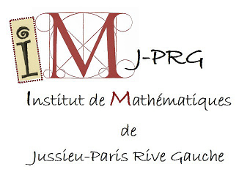| Résume | The Lorentz gas is one of the simplest and most widely-studied models for particle transport in matter. It describes a cloud of non-interacting gas particles in an infinitely extended array of identical spherical scatterers, whose radii are small compared to their mean separation. The model was introduced by Lorentz in 1905 who, following the pioneering ideas of Maxwell and Boltzmann, postulated that its macroscopic transport properties should be governed by a linear Boltzmann equation. A rigorous derivation of the linear Boltzmann equation from the underlying particle dynamics was given, for random scatterer configurations, in three seminal papers by Gallavotti, Spohn and Boldrighini-Bunimovich-Sinai. The objective of this lecture is to develop an approach for a large class of deterministic scatterer configurations, including various types of quasicrystals. We prove the convergence of the particle dynamics to transport processes that are in general (depending on the scatterer configuration) not described by the linear Boltzmann equation. This was previously understood only in the case of the periodic Lorentz gas through work of Caglioti-Golse and Marklof-Strombergsson. Our results extend beyond the classical Lorentz gas with hard sphere scatterers, and in particular hold for general classes of spherically symmetric finite-range potentials. We employ a rescaling technique that randomises the point configuration given by the scatterers' centers. The limiting transport process is then expressed in terms of a point process that arises as the limit of the randomised point configuration under a certain volume-preserving one-parameter linear group action.
This is a joint work with Andreas Strombergsson |

